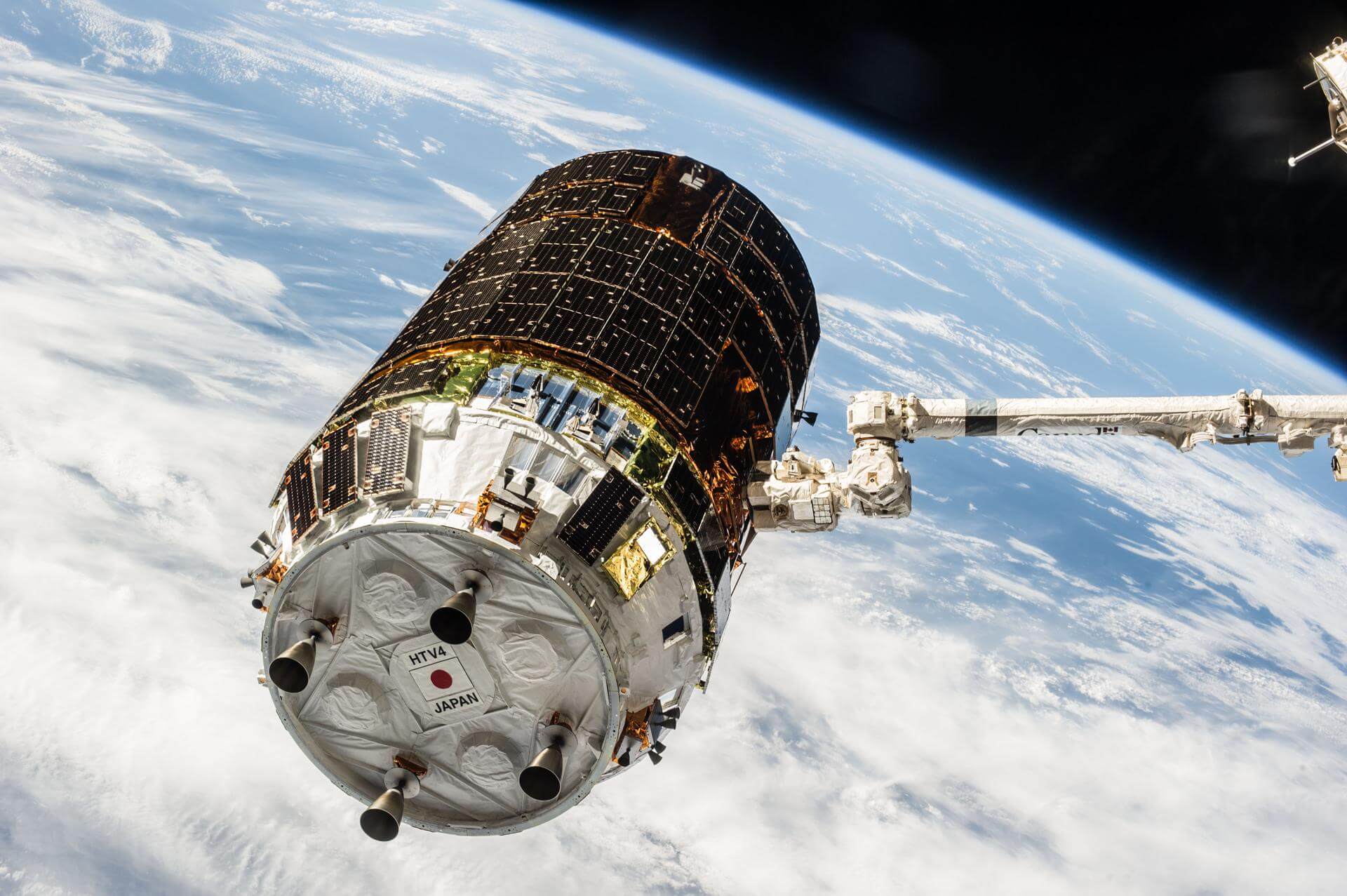
H-II Transfer Vehicle (HTV)
In-active Cargo Cargo Resupply Payload Capacity: 6000 kg Diameter: 4.4 m Height: 9.8 m()
Sept. 10, 2009
Cargo Earth Orbit Logistics
Flight Life
Solo flight about 100 hours, stand-by more than a week, docked with the ISS about 30 days.
Description
The HTV is about 9.8 metres (32 ft) long (including maneuvering thrusters at one end) and 4.4 metres (14 ft) in diameter. Total mass when empty is 10.5 tonnes (11.6 short tons), with a maximum total payload of 6,000 kilograms (13,000 lb; 6.0 t; 6.6 short tons), for a maximum launch weight of 16.5 tonnes (18.2 short tons). The HTV is comparable in function to the Russian Progress, European ATV, commercial Dragon, and commercial Cygnus spacecraft, all of which bring supplies to the ISS. Like the ATV, the HTV carries more than twice the payload of the Progress, but is launched less than half as often. Unlike Progress capsules and ATVs, which use the docking ports automatically, HTVs and American commercial spacecraft approach the ISS in stages, and once they reach their closest parking orbit to the ISS, crew grapple them using the robotic arm Canadarm2 and berth them to an open berthing port on the Harmony module.
History
Like the European Automated Transfer Vehicle the Japan Aerospace Exploration Agency had agreed to take part in the resupply operations of the international space station and developed the HTV to perform this task.
Electron
Raise and Shine (RAISE-4)
Rocket Lab Launch Complex 1B - Rocket Lab Launch Complex 1, Mahia Peninsula, New ZealandRAISE-4 (RApid Innovative payload demonstration Satellite-4) is a Japan Aerospace Exploration Agency (JAXA) satellite for on-orbit demonstrations of …
Kuaizhou 11
DEAR-5
Launch Area 95A - Jiuquan Satellite Launch Center, People's Republic of ChinaDEAR-5 is a commercial in-orbit payload and micro-gravity experiments hosting spacecraft developed by Chinese commercial company AZSPACE for various …
Long March 12
SatNet LEO Group 16
Commercial LC-2 - Wenchang Space Launch Site, People's Republic of ChinaA batch of Low Earth Orbit communication satellites for the Chinese state owned SatNet constellation operated by the China Satellite Network Group. …
Falcon 9
Starlink Group 6-90
Space Launch Complex 40 - Cape Canaveral SFS, FL, USAA batch of 29 satellites for the Starlink mega-constellation - SpaceX's project for space-based Internet communication system.
Falcon 9
Starlink Group 15-11
Space Launch Complex 4E - Vandenberg SFB, CA, USAA batch of 27 satellites for the Starlink mega-constellation - SpaceX's project for space-based Internet communication system.
Kinetica 1
9 satellites
Launch Area 130 - Jiuquan Satellite Launch Center, People's Republic of ChinaShare ride of 9 satellites to sun-synchronous orbit: * Satellite 813 (United Arab Emirates) * Jilin-1 Gaofen 07B-01/07C-01/07D-01 * Dongpo-15 …
Falcon 9
NROL-77
Space Launch Complex 40 - Cape Canaveral SFS, FL, USAClassified payload for the US National Reconnaissance Office.
Long March 3B/E
TJSW-22
Launch Complex 3 (LC-3/LA-1) - Xichang Satellite Launch Center, People's Republic of ChinaChinese classified satellite claimed to be for communication technology test purposes. Actual mission not known.
Long March 4B
Yaogan 47
Launch Area 94 (SLS-2 / 603) - Jiuquan Satellite Launch Center, People's Republic of ChinaThe Yaogan 47 is a Chinese military “remote sensing” satellite of unknown purposes.
Falcon 9
Starlink Group 6-92
Launch Complex 39A - Kennedy Space Center, FL, USAA batch of 29 satellites for the Starlink mega-constellation - SpaceX's project for space-based Internet communication system.

